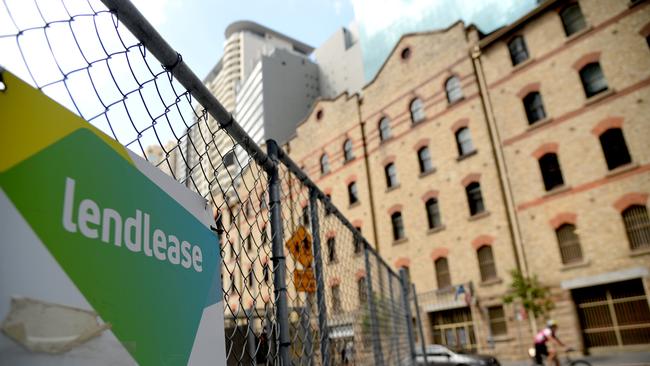
Lendlease could be plotting a move to tip all its unprofitable assets into a separate entity still held within the company’s overall structure that would be gradually sold down.
DataRoom has learned that the real estate group has had a strategic plan for the business that has been in place for some time, but is awaiting sign-off from the real estate company’s chief executive, Tony Lombardo, to update investors on the strategy next month.
Mr Lombardo remains under pressure as activist investors such as John Wylie become vocal about the group’s performance, which has not met their expectations.
The understanding is that a full demerger of Lendlease, where part of the business is split off from the existing company structure and is sold or separately listed, remains a difficult and unlikely option.
The poor-performing assets and projects would need capital behind them, which would probably require an equity raising by Lendlease.
The $4.4bn Lendlease has been straining under $2.4bn of debt and has been offloading assets to reduce borrowings. Investors would probably be unhappy about a raise.
The idea would take proceeds from the assets but not invest further capital, and the assets would be for sale for interested acquirers.
Investment banks Macquarie Capital, Morgan Stanley and Gresham are working on a plan to shape the company’s direction.
The move is likely to be a throwback to the days of the Global Financial Crisis for real estate investment bankers, who came up with ways to fix the mistakes of troublesome property groups that had bought the wrong sort of assets with too much debt in jurisdictions such as Europe and the US.
To address the missteps, some of the companies set up a separate division with poor-performing assets, similar to “good bank, bad bank” structures, then placed them into run-off mode, offloading the assets over time.
Leighton Holdings embarked on a similar move with its Leighton Properties unit involving assets that it owned in Los Angeles that were difficult to manage and did not fit the business.
GPT placed poor-performing European properties into a separate unlisted fund that were sold.
The investment bank that failed during the GFC in 2009, Babcock & Brown, also embarked on similar moves with real estate assets.
Assets that could be placed in the so-called Lendlease “bad bank” would probably be some construction and development projects overseas.
Real estate experts said such a move would make sense for Lendlease, which has indicated its eagerness to bring more capital into Australia, and would probably be well received.
However, it is uncertain whether it would be enough to appease its major shareholders such as Mr Wylie’s Tanarra, David Di Pilla’s HMC Capital and institutional investor Allan Gray, which have all been losing patience with the business.
Activist shareholder Mr Wylie, whose fund Tanarra is an investor, has written to the company’s board, demanding it consider carving off the company’s underperforming international operations, with a slew of assets worth about $4bn to eventually be sold off, and has called for the departures of Mr Lombardo and chairman Michael Ullmer, who is understood to have no plans to leave.
Lendlease builds large-scale projects, working on projects such as Sydney’s Barangaroo precinct, London’s Elephant Park urban renewal project, Singapore’s Paya Lebar Quarter and New York’s Claremont Hall, with a $103bn global development pipeline.
It has 47 developments globally and a construction business with an $8.3bn workbook.
It also has $48bn in funds and assets under management, including office, residential, retail, industrial and social infrastructure assets.
Its business is broken down into three reporting units: development, construction and investments.




To join the conversation, please log in. Don't have an account? Register
Join the conversation, you are commenting as Logout